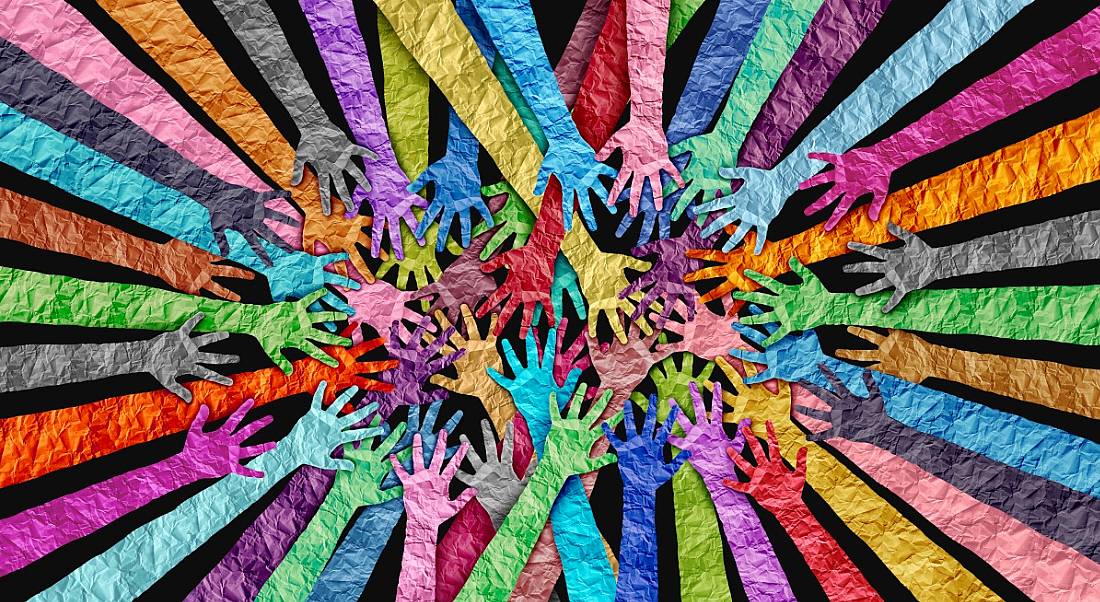According to Texthelp, there are more people with dyslexia in the world than with blue eyes. With that in mind, accessibility should be a given, not an add-on, says Martin McKay.
Nearly 30 years ago Martin McKay founded Texthelp, an Antrim-based organisation that provides assistive technology and edtech software to the education and workplace sectors.
For almost three decades, serving first as the company CTO and more recently as the CEO, McKay has helped more than 250m people to communicate and be understood.
Many of the people who require Texthelp’s services are neurodivergent, that is to say they experience natural variations in the brain, in relation to how they think, process, learn and behave. Neurodivergence is most often associated with conditions such as dyslexia, dyspraxia, ADHD and the autism spectrum.
When, at age 53, McKay discovered that he had lived his entire life with undiagnosed dyslexia, he wasn’t exactly surprised, as he had harboured suspicions for nearly 40 of those years. “When I was 14 or 15 I mentioned it to my English teacher, but because I was top of my class in several subjects, she dismissed it,” he said.
It is not unusual for people to have their neurodivergent traits dismissed as, particularly in the past, educational institutions and places of employment may not have had the means, the resources or the motivation to recognise the strengths and harness the talents of atypical people.
Even as a child, McKay did as many dyslexics do and he discovered clever ways to accommodate his deficits. He was testing in the 99th percentile in verbal comprehension, perception and reasoning, but was closer to the 20th percentile for reading accuracy. “I learned to carry a notebook and write everything down to supplement my working memory,” said McKay.
“Really, I’ve manufactured my entire career around accommodations.”
With this in mind, how can employers embrace a diverse and talented workplace, fostering a culture of acceptance and equality that strengthens their companies?
It just makes sense
For McKay, when the requirements of neurodiverse people in the workforce are not being met, companies are essentially sacrificing a range of different perspectives, talents and skills that ultimately make a business more sustainable in the long run.
“Failing to meet the accessibility needs of neurodivergent employees has a two-fold negative impact. On an individual level, it can lead to decreased self-esteem, increased stress and even burnout. Employees who struggle in an inaccessible environment may feel misunderstood, undervalued and unable to perform to their full potential.”
For organisations, this translates into missed opportunities to take advantage of a rich talent pool, he said, leading to decreased productivity, increased employee turnover and potentially legal recourse for failing to provide reasonable workplace accommodations.
Early identification and intervening support can be crucial to people with dyslexia; however, for McKay, it is also important that the right accommodations are already in place. For example, employers are only legally obligated to provide reasonable accommodations after a disability disclosure has been made.
“We need to create more accessible workplaces where people with disabilities might not have to disclose at all to get the support they need. That means prioritising accessibility in the physical work environment, yes, but as we undergo a digital transformation as a society, digital accessibility is equally as important,” he said.
This should include “pairing alt text with images, ensuring captions are available at every meeting, providing accessible technologies to everyone, formatting digital documents correctly and using plain, simple language that’s easier to understand”.
By adopting standard practices in the workplace and creating points of access for people with disabilities, it can aid those who may not yet have a diagnosis, as well as people who would prefer to keep their medical information private.
“We have a position here at Texthelp. You don’t need a diagnosis. What we want is everyone to be the absolute best version of themselves. We want to unleash everyone’s potential. So we’re not saying ‘give us your diagnosis’, we’re approaching it much more from a ‘how can we help you? How can we help you be your best?’”
Challenges
Undoubtedly, there are challenges in introducing accessibility technology into the workplace. There can be significant upfront costs involved in the purchasing of software, hardware adaptations and training resources.
Additionally, integrating new software within existing frameworks can often be time-consuming and complex. “Organisations need to consider compatibility issues and ensure smooth workflows when introducing new technologies,” said McKay, and they also have to ensure “accessibility features are implemented without compromising data security”.
But ultimately, for McKay, the benefits far outweigh the challenges. “These challenges can be overcome through careful planning, investment in training and a commitment to creating a truly inclusive workplace.”
Find out how emerging tech trends are transforming tomorrow with our new podcast, Future Human: The Series. Listen now on Spotify, on Apple or wherever you get your podcasts.




